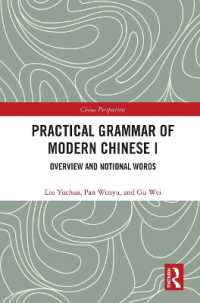- ホーム
- > 洋書
- > 英文書
- > Science / Mathematics
Full Description
Being stimulated by these epoch-making findings in metal microclusters and aided by progress of the experimental techniques producing relatively dense, non interacting micro clusters of various sizes in the form of micro cluster beams, the research field of microclusters has developed rapidly in these 5 to 7 years.







